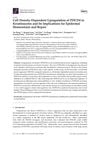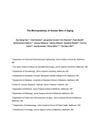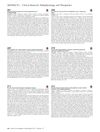Search
forLearn
4 / 4 resultslearn Osteopontin
signaling protein that, when suppressed, may grow hair by reducing inflammation and stem cell loss
learn Thymosin Beta 4
learn Low Level Laser Therapy
laser therapy for anti-inflammatory and likely insignificant hair regrowth effects
Research
5 / 1000+ results
research Cell Density-Dependent Upregulation of PDCD4 in Keratinocytes and Its Implications for Epidermal Homeostasis and Repair
PDCD4 is important for controlling skin cell growth and healing.

research Genome Wide Association Analysis of Root Hair Traits in Rice Reveals Novel Genomic Regions Controlling Epidermal Cell Differentiation
Scientists found new genetic areas that affect how rice root hairs grow and develop.

research The Microanatomy of Human Skin in Aging
Aging skin shows thinner layers, fewer hair follicles, and new biomarkers like increased space between cells and smaller sebaceous glands.

research Structural Changes in Human Skin After Topical Application of Glucocorticoids Assessed by In Vivo Imaging Technologies
Topical glucocorticoids thin the skin and change collagen structure.
research Development of Pluripotent Stem Cell-Derived Epidermal Organoids That Generate Effective Extracellular Vesicles in Skin Regeneration
Stem cell-derived organoids can improve skin healing.
Community Join
5 / 81 resultscommunity Clearing the air on how non-surgical treatments really work
Treatments for hair loss, including finasteride, dutasteride, minoxidil, ketoconazole, microneedling, and low level laser light therapy, which aim to reduce DHT production, increase cell absorption and blood flow, and stimulate epidermal stem cells. It also stresses the importance of patience when using these treatments.
community The Real Cause Of Androgenetic Alopecia
Androgenetic alopecia is caused by DHT affecting hair growth. Finasteride and minoxidil are used to manage hair loss by blocking DHT and promoting hair growth.
community New and Interesting HairLoss Studies/Papers/Reviews
Hair loss treatments discussed include Dutasteride with Ketoconazole, tissue engineering strategies, and androgenetic alopecia therapies. Massage doubles follicular retention, improving treatment effectiveness.

community If You Have DUPA, PLEASE READ THIS: Everyone Should Be Scalp Biopsied
Scalp biopsies are crucial for diagnosing hair loss conditions like Diffuse Unpatterned Alopecia (DUPA) and retrograde hair loss, as treatments like finasteride and dutasteride may not be effective if other conditions are present. Combining PPAR-GAMMA agonists with retinoids could improve treatments for conditions like Lichen Planopilaris.
community Eirion Therapeutics Announces Potential Breakthrough Treatment for Hair Loss Based on First-in-Man Clinical Trial Results
ET-02, a new hair loss treatment, shows promising results with a 6-fold increase in hair count, potentially outperforming minoxidil by activating stem cells in hair follicles. Further trials are ongoing to confirm its efficacy and safety, with potential market release in the future.